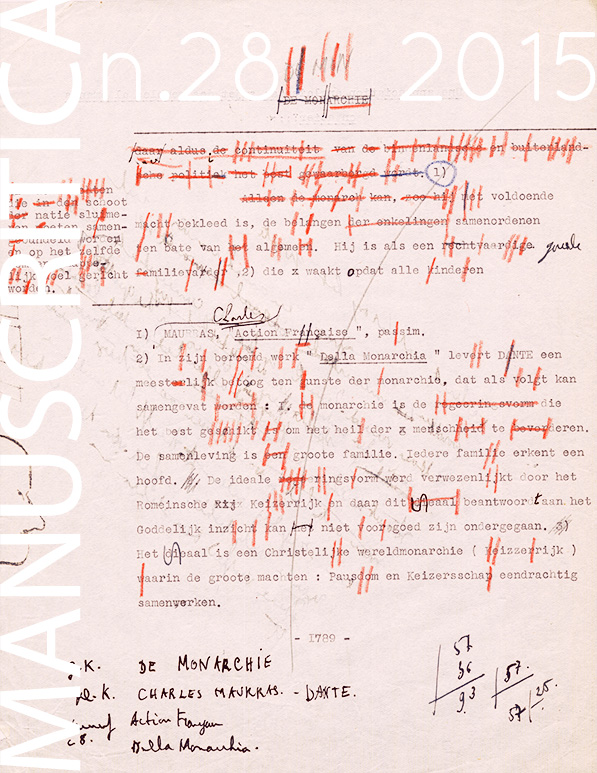“(HIATUS IN MS.)”: towards a TEI compliant typology of textual lacunae in Samuel Beckett’s manuscripts
DOI:
https://doi.org/10.11606/issn.2596-2477.i28p65-73Palavras-chave:
Beckett. TEI. ManuscriptResumo
Abstract: As is the case with so many first drafts, some of Beckett's manuscripts still contain gaps: zones in the text that are either left completely blank, or are otherwise indicated to be filled in at a later stage in the writing process. Such gaps are interesting milestones for any genetic critic, because they may indicate a hesitation on the author’s part during the writing process: a name not yet decided on, a word or phrase that needs fine-tuning, etc. In Beckett’s case, these gaps are especially significant, because they feature so prominently in his published works as well: from the startling “(Hiatus in MS.)” in his early novel Watt to the phrase “and here a word he could not catch” in his last prose text Stirrings Still, narrative pauses, interruptions, and false starts have undoubtedly become a leitmotif throughout Beckett’s oeuvre. Encoding Beckett’s own hiatuses for a digital edition of his manuscripts, however, poses a problem. While the TEI’s <gap> element may intuitively seem like the perfect match, the description of the <space> element is in fact more closely related to the textual feature we wish to encode. And although these gaps/spaces will invariably differ in appearance (a blank space; an indented string of characters; a symbol of some kind; etc.) and motivation (inadequacy; indecisiveness; etc.), the TEI does not yet allow either of these elements to be classified further through the @type attribute. Using the manuscripts of Beckett’s Malone meurt as a case study, this paper makes a case for the TEI’s <space> element to be added to the att.typed class (a feature request for which was approved while writing this paper), and makes a first attempt at a typology of Beckett's use of hiatuses in his manuscripts.
Downloads
Downloads
Publicado
Edição
Seção
Licença
Copyright (c) 2015 Wout Dillen

Este trabalho está licenciado sob uma licença Creative Commons Attribution 4.0 International License.













